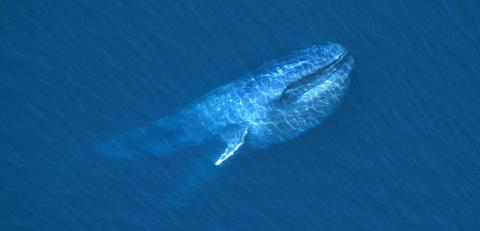
The Circle of Whale Poo
Blue whales are kind of like farmers, if farmers used their own feces as manure!
Researchers have shown that nutrients from whales’ poo fertilize phytoplankton, which are eaten by krill … which are eaten by whales. This closed food web is becoming increasingly important in the Southern Ocean.
In the Southern Ocean, surrounding Antarctica, blue whales were nearly wiped out by industrial whaling from the 1920s to 1940s. But now, with whaling curtailed, the whales are surging back: their population growing by 7.3 percent per year. By 2066, blue whale numbers could be back to historic levels.
For conservationists, this last-minute rescue of the largest animals on Earth is a good news story. For others, the blue whale’s return is a daunting prospect. As conventional thinking suggests, the resurgence of these massive creatures—with their equally massive appetites—is creating an ever-greater competition for the commercial krill fishery.
These worries are not entirely unfounded. In the Southern Ocean, shrimp-like krill sit near the base of the food web. Estimates place the total krill biomass in the sea at 379 million tonnes. Each year, commercial trawlers pull in up to 5.6 million tonnes, and during peak feeding season a blue whale can eat nearly four tonnes of krill a day.

With a pre-whaling population of 239,000 in the Southern Ocean, blue whales will soon be consuming a decent chunk of the total krill. That would leave the commercial trawl fleet—mostly from Norway, South Korea, and China—with fewer krill to use in fish meal for aquaculture and aquarium feeds, in vitamins or pharmaceuticals, or as bait for sport fishing.
Countering this conventional thinking, a study headed by marine biologist Trish Lavery suggests that blue whales are not exploitive gluttons that will ruin the commercial krill fishery. Instead, the mammals are actually an important and previously overlooked contributor to marine productivity. Blue whales don’t decimate krill populations, they bolster them.
